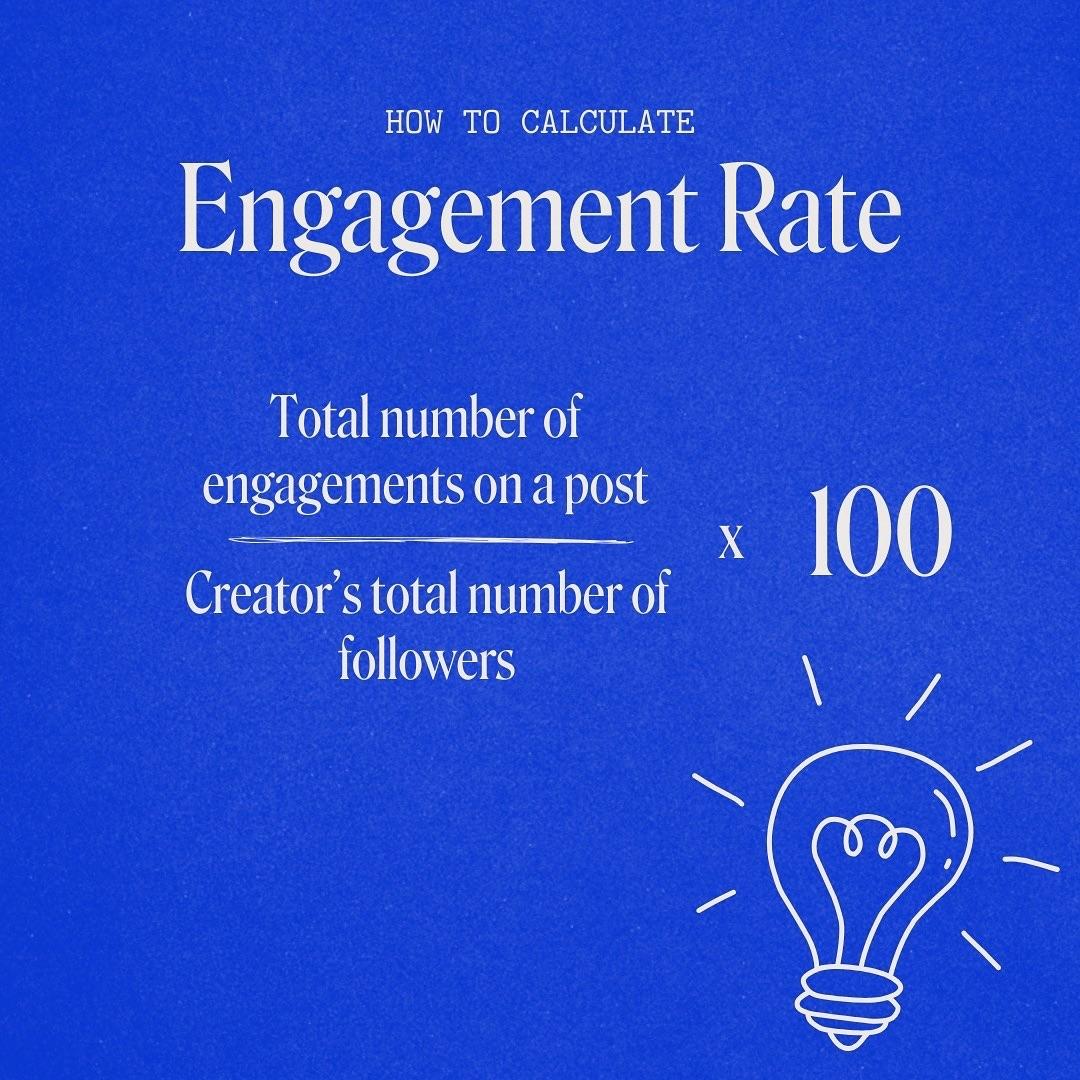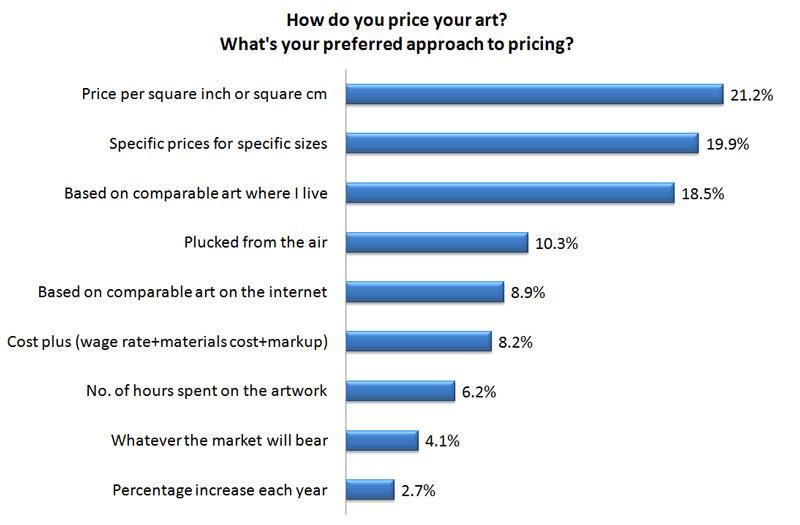
Are you an artist ready to turn your passion into profit, but feeling a bit lost when it comes to pricing your work? You’re not alone! Many talented creators struggle with finding that sweet spot between valuing their artistry and ensuring it sells. Pricing your art isn’t just about slapping a number on a canvas; it’s a strategic decision that can make or break your success in the art market. In this comprehensive guide, we’ll walk you through the essentials of pricing your art for maximum profit. You’ll discover proven formulas, insider tips, and key factors that can help you set prices that reflect your skill while attracting buyers. So grab your sketchbook and let’s dive into the art of pricing, because you deserve to be recognized for your talent—and compensated for it, too!
Understanding the Value of Your Art
Every piece of art you create carries a unique story and emotional resonance, which can significantly influence its value. Understanding this intrinsic value is the first step toward pricing your artwork effectively. As an artist, it’s crucial to grasp not just the materials and time spent on a piece, but also the intangible qualities that make your work special.
Consider the following factors when evaluating the value of your art:
- Creative Process: Reflect on the inspiration, experimentation, and techniques that brought your piece to life.
- Time Investment: Calculate the hours spent creating, as the time invested is a direct reflection of your dedication.
- Materials Used: The quality and cost of materials play a significant role in determining value. High-end supplies often justify a higher price.
- Your Unique Style: Your signature style can set you apart in the market, allowing you to command higher prices.
- Market Trends: Stay informed about current trends and demand in the art world, as these can greatly affect pricing.
It’s essential to assess your work not only as an artist but also as a small business owner. Just like any product, art must be competitively priced. Here’s a simple method to help you understand how to set your prices:
| Factor | Value |
|---|---|
| Material Costs | $200 |
| Time Invested (Hours) | 30 |
| Hourly Rate | $20 |
| Total Suggested Price | $800 |
In this example, if your material costs total $200 and you’ve invested 30 hours of work at an hourly rate of $20, your total suggested price would be $800. This approach not only covers your costs but also recognizes the value of your time and creativity.
Additionally, don’t underestimate the power of your reputation as an artist. Collectors often pay a premium for works by artists they trust or admire. As you build your portfolio and gain exposure, your prices can and should increase. This reinforces the perception of value and establishes your work as a serious investment.
Lastly, consider the emotional connection your art fosters with potential buyers. Art is often seen as a luxury good, and buyers are generally willing to invest more for pieces that evoke strong feelings or memories. Highlight these narratives around your work in your marketing efforts, as they can significantly increase perceived value and justify higher pricing.
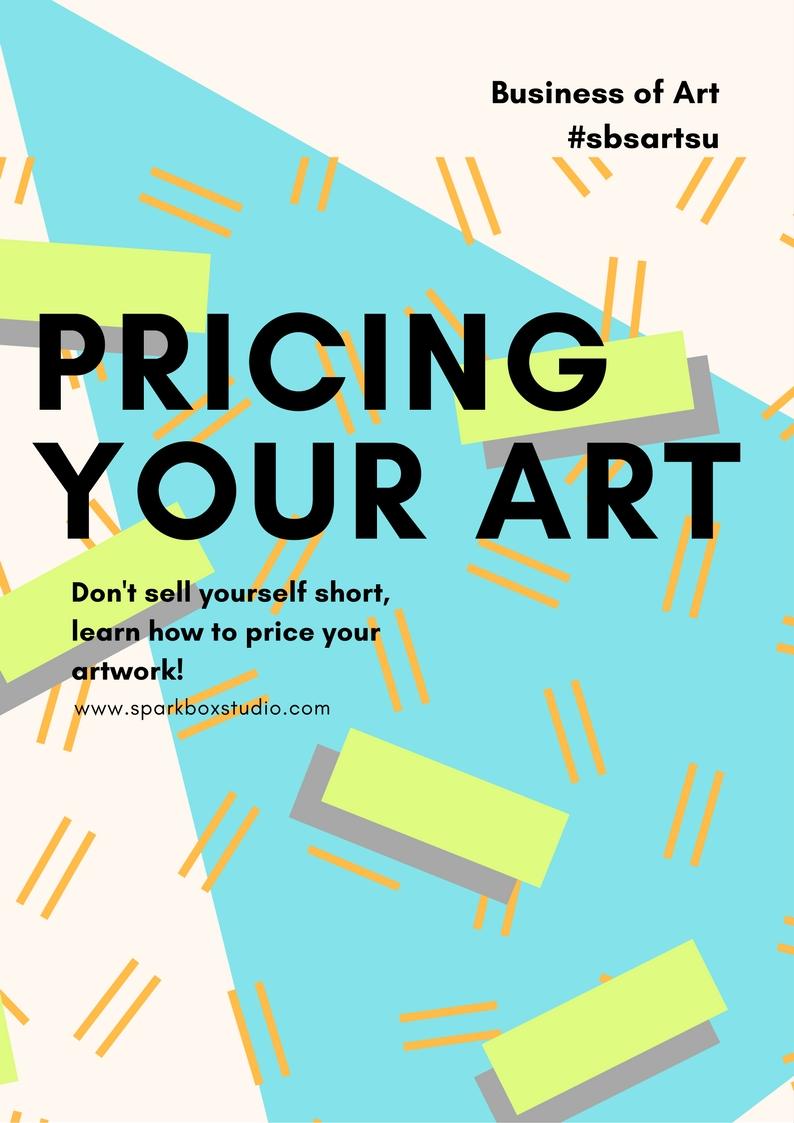
The Psychology Behind Pricing Your Artwork
Understanding the psychology behind pricing is essential for artists who want to maximize their profit while also ensuring their work is valued appropriately. The way you price your artwork can evoke emotions, perceptions, and even drive purchasing behavior among potential buyers. Here are some key psychological principles to consider:
- Anchoring Effect: This occurs when people rely heavily on the first piece of information they see when making a decision. By presenting a higher price tag for your artwork initially, you set an anchor that makes a slightly lower price appear more reasonable and attractive.
- Scarcity Principle: The idea that limited availability increases desirability. If you position your work as exclusive or limited edition, you can justify a higher price point, enticing buyers who fear missing out.
- Perceived Value: The value of your artwork is often determined by how it is presented. High-quality materials, professional framing, and thoughtful packaging can enhance the perceived value, making customers more willing to pay a premium.
- Social Proof: Testimonials, reviews, or even showcasing past sales can reinforce the value of your art. When potential buyers see that others have invested in your work, they are more likely to follow suit.
Another important aspect to consider is the price range psychology. People often operate within a certain price range when making purchases. If your artwork falls within a familiar range, it can lead to quicker buying decisions. Conducting market research to establish what similar artists charge can help you find that sweet spot.
Additionally, the concept of framing can significantly influence how your price is perceived. For instance, instead of simply stating the price, you can frame it as an investment in a unique piece of art that will appreciate over time. This can help buyers view the purchase as not just a transaction, but as a valuable addition to their lives.
Here’s a quick reference table that summarizes these psychological strategies:
| Psychological Principle | Application in Pricing |
|---|---|
| Anchoring Effect | Set a high initial price to make discounts more appealing. |
| Scarcity Principle | Offer limited editions to create urgency. |
| Perceived Value | Enhance presentation with quality materials and framing. |
| Social Proof | Showcase past sales and customer testimonials. |
| Framing | Present the price as an investment in art. |
remember that pricing is not just about numbers; it’s about storytelling. Share your artistic journey and the meaning behind your work. When buyers connect with the story, they are often willing to pay more, viewing your art not just as a decorative piece, but as an emotional investment. By tapping into these psychological elements, you can create a pricing strategy that not only maximizes profit but also resonates deeply with your audience.
Factors That Influence Art Pricing
When it comes to determining the right price for your artwork, several factors come into play. Understanding these elements can significantly impact your profitability and help you position your art effectively in the market.
Market Demand: The popularity of certain styles, themes, or mediums can greatly affect pricing. If your artwork aligns with current trends, you might be able to command higher prices. Keep an eye on what other artists are selling and how collectors are responding. This awareness allows you to adapt and possibly increase your prices accordingly.
Artist Reputation: Your personal brand and reputation as an artist can significantly influence how much collectors are willing to pay. Established artists often fetch higher prices due to demand and a proven track record. To enhance your reputation, focus on building a strong portfolio, engaging with your audience on social media, and participating in exhibitions and art fairs.
Artwork Size and Complexity: Generally, larger pieces command higher prices. However, the intricacy of the work also plays a role. If a piece requires more time, skill, or materials, it should be priced accordingly. Consider the amount of effort and creativity you put into each piece when establishing your pricing strategy.
Material Costs: The quality of materials you use can affect your pricing. High-quality paints, canvases, and other supplies might lead to a higher price tag, and rightly so. Be sure to factor in these costs, along with any additional expenses like framing or shipping, to ensure that your profit margin remains healthy.
Target Audience: Understand who your ideal buyers are. Are they casual art lovers or serious collectors? Tailoring your pricing to suit your audience can help you sell more effectively. Research what similar artists are charging and adjust your prices to meet your audience’s expectations while still valuing your work appropriately.
Sales Channels: Where you sell your art can also influence pricing. Selling directly to customers through your website or at local markets can lead to higher profit margins compared to selling through galleries, which often take a commission. Consider diversifying your sales channels to maximize your exposure and potential earnings.
| Factor | Impact on Pricing |
|---|---|
| Market Demand | Higher demand can raise prices. |
| Artist Reputation | Established artists can charge more. |
| Artwork Size | Larger pieces typically cost more. |
| Material Costs | Quality materials increase prices. |
| Target Audience | Pricing should match buyer expectations. |
| Sales Channels | Direct sales often offer better profit margins. |
By considering these factors carefully, you can develop a pricing strategy that not only reflects the true value of your artwork but also maximizes your potential profit. Remember, pricing isn’t just about the numbers; it’s about communicating the value of your art to potential buyers.
Calculating Your Time and Costs
Understanding the intricacies of pricing your artwork involves more than simply assigning a monetary value. To effectively price your art and maximize your profit, you must consider the time invested and the costs incurred throughout the creation process. This not only ensures you’re adequately compensated but also helps establish your value as an artist in the marketplace.
Start by calculating the time you spend on your artwork. This includes:
- Concept Development: Time spent brainstorming and planning your piece.
- Creation: Hours dedicated to the actual making of the artwork.
- Finishing Touches: Additional time required for framing, varnishing, or preparing the piece for sale.
- Marketing: Efforts put into promoting your artwork, including taking photographs and writing descriptions.
Once you have a total number of hours, assign yourself an hourly wage. Think about what you would like to earn per hour considering your skill level, expertise, and market standards. For instance, if you decide on an hourly rate of $25 and you spent 20 hours on a piece, your labor cost would be:
| Item | Hours | Rate | Total Cost |
|---|---|---|---|
| Labor | 20 | $25 | $500 |
Next, you must consider the direct costs associated with creating your art. This includes:
- Materials: Paints, canvases, brushes, or any other supplies.
- Tools: Any equipment purchases or maintenance costs.
- Studio Costs: Rent, utilities, or any other overheads that contribute to your workspace.
Summing these costs will give you a clearer picture of your total investment in each piece. For example, if your materials and overhead come to $150, your total cost to create the artwork would then combine your labor and material expenses:
| Item | Cost |
|---|---|
| Labor | $500 |
| Materials | $150 |
| Total Cost | $650 |
Now that you know your total costs, it’s time to factor in your desired profit margin. A common approach is to multiply your total cost by a markup percentage. For example, if you choose a markup of 50%, your selling price would be:
| Total Cost | Markup Percentage | Selling Price |
|---|---|---|
| $650 | 50% | $975 |
| Final Value | $975 |
With this structured approach, you not only ensure your time and efforts are valued but also pave the way for sustainable art business practices. Pricing is not merely a number; it reflects your dedication, creativity, and the unique value you bring to your buyers. Remember, pricing art can be a fluid process—be open to adjustments as you gain more experience and understand your market better. Your work deserves to be priced right!

Exploring Pricing Models for Artists
When it comes to pricing your artwork, understanding various pricing models is essential for maximizing your profit while also ensuring your work is valued. Here are some common approaches that artists can consider:
- Cost-Plus Pricing: This method involves calculating the total cost of creating a piece and then adding a markup percentage. It’s straightforward and guarantees that all expenses are covered.
- Market-Based Pricing: Researching what similar artists charge for comparable work can help you gauge the market rate. This model is beneficial for positioning your art within a competitive landscape.
- Value-Based Pricing: Here, the price reflects the perceived value of your art to the customer. This approach often involves storytelling and branding, conveying why your art is worth the price you set.
- Tiered Pricing: Offering multiple pricing levels for different sizes or types of artwork can appeal to a wider audience. Think about benefits like affordability for smaller pieces and exclusivity for larger, unique works.
Each pricing model has its strengths, and the best approach often involves a combination. For instance, you could start with cost-plus pricing to ensure expenses are covered and then adjust based on market research and perceived value.
It’s also crucial to consider how your pricing reflects your brand identity. A high price can denote exclusivity and quality, while a lower price may attract a broader audience but could dilute your brand’s perceived value. Finding the sweet spot that aligns with your artistic vision and market positioning is key.
| Pricing Model | Pros | Cons |
|---|---|---|
| Cost-Plus Pricing | Simple to calculate, ensures costs are covered. | May not reflect true market value. |
| Market-Based Pricing | Aligns with industry standards, competitive. | May undervalue unique artistry. |
| Value-Based Pricing | Maximizes potential profit, emphasizes uniqueness. | Requires effective marketing and storytelling. |
| Tiered Pricing | Appeals to diverse customer segments. | Can complicate pricing structure. |
Always remember that pricing isn’t set in stone. As you gain more experience, expand your portfolio, or establish a stronger reputation, don’t hesitate to revisit and adjust your prices accordingly. Regularly assess your pricing strategy to ensure it remains in alignment with your evolving brand and market conditions.
Lastly, consider incorporating client feedback into your pricing strategy. Engaging with your audience can provide valuable insights into what they value most about your art, allowing you to tailor your offerings and prices to better meet their expectations.
The Power of Market Research in Setting Prices
Understanding the dynamics of market research is crucial for artists who want to effectively set prices for their work. It’s not just about what you think your art is worth; it’s about how it resonates within the market landscape. By tapping into market research, you can make informed decisions that align with both your creative vision and your financial goals.
When it comes to setting prices, consider these key benefits of conducting thorough market research:
- Identifying Target Audience: Knowing who your ideal buyers are helps in tailoring your prices. Are they collectors, casual buyers, or businesses? Understanding their purchasing power will guide your pricing strategy.
- Analyzing Competitor Pricing: Look at how similar artists price their work. This doesn’t mean you should mimic others, but understanding market rates can provide a baseline for your own pricing strategy.
- Trends and Demand: Market research highlights current trends in the art world. If certain styles or mediums are in high demand, you can capitalize on that by adjusting your prices accordingly.
- Feedback and Perception: Engaging with potential buyers through surveys or social media can provide insights into how your art is perceived. This feedback can be instrumental in justifying your prices.
To effectively execute market research, you could utilize various methods:
- Online Surveys: Create simple surveys to gauge interest and willingness to pay among your followers.
- Social Media Analysis: Monitor how your artworks perform on platforms like Instagram or Facebook. High engagement might indicate a higher perceived value.
- Art Market Reports: Review existing reports from art galleries or auction houses for data on pricing trends.
Another powerful tool in your pricing arsenal is data visualization. By compiling your findings into clear, concise tables, you can easily spot patterns and make decisions. Here’s a simple example:
| Art Style | Average Price | Demand Level |
|---|---|---|
| Abstract | $500 | High |
| Landscape | $300 | Medium |
| Portrait | $750 | Low |
By frequently revisiting your market research, you can adapt to changes in your audience’s preferences and the overall art landscape. Pricing is not a one-time task; it’s an ongoing process that requires attention and flexibility. Regularly update your knowledge and adjust your prices as necessary to ensure that you remain competitive while maximizing your profits.
market research is an invaluable tool that empowers artists to price their work intelligently. By understanding your market, your audience, and the competitive environment, you can set prices that reflect the true value of your artwork while also appealing to buyers. Leveraging these insights not only enhances your credibility as an artist but also paves the way for sustainable financial success.
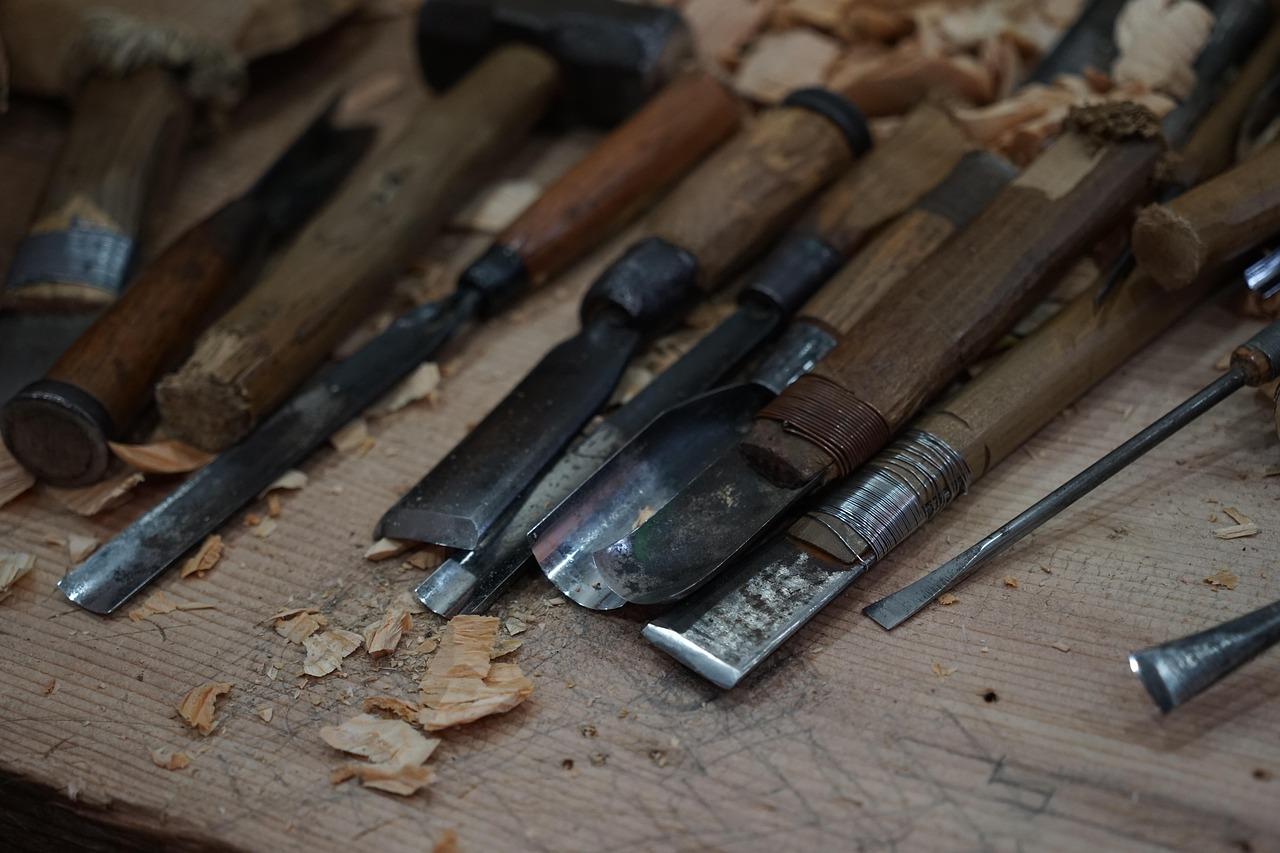
How to Communicate Your Art’s Value to Buyers
When you’re ready to sell your artwork, understanding how to communicate its value is essential for attracting buyers and securing the right price. Your art isn’t just paint on canvas; it embodies your creativity, effort, and unique perspective. To effectively convey its worth, consider the following strategies:
- Tell Your Story: Every piece of art has a narrative. Share your inspiration, the emotions behind the creation, and any unique techniques you employed. Buyers are often more willing to invest when they understand the story that accompanies the artwork.
- Highlight Your Skills: Showcase your artistic journey, including any relevant education, awards, and exhibitions. Your credentials can significantly enhance perceived value.
- Utilize Comparables: Research similar artists and their pricing. By positioning your artwork alongside peers, you can provide buyers with a clearer understanding of market value.
- Engage with Your Audience: Use social media platforms to connect with potential buyers. Share behind-the-scenes content, tutorials, or live Q&A sessions. This builds a community around your art, enhancing its value through connection.
- Offer Limited Editions: If applicable, create limited edition prints or pieces. Scarcity often increases perceived value, making buyers feel they are part of something exclusive.
In addition to these strategies, consider presenting your artwork professionally. High-quality photographs can significantly impact how buyers perceive your art. Use natural light and appealing backgrounds to showcase the details and colors of your work. A well-crafted presentation can elevate your art’s status and justify a higher price point.
| Strategy | Benefit |
|---|---|
| Telling Your Story | Creates emotional connection, making the art more relatable |
| Highlighting Skills | Builds credibility and trust with potential buyers |
| Utilizing Comparables | Provides context for pricing and positioning |
| Engaging with Audience | Fosters community and loyalty, enhancing perceived value |
| Offering Limited Editions | Increases scarcity and exclusivity, driving demand |
Lastly, don’t overlook the power of your sales platform. Whether it’s an online gallery, personal website, or local art fair, ensure your space reflects the quality of your art. Professionalism in presentation—whether through your branding, packaging, or customer service—can significantly impact buyers’ perceptions of value.
By effectively communicating the value of your art, you not only justify your pricing but also create a stronger connection with your buyers, leading to more sales and a thriving artistic career.
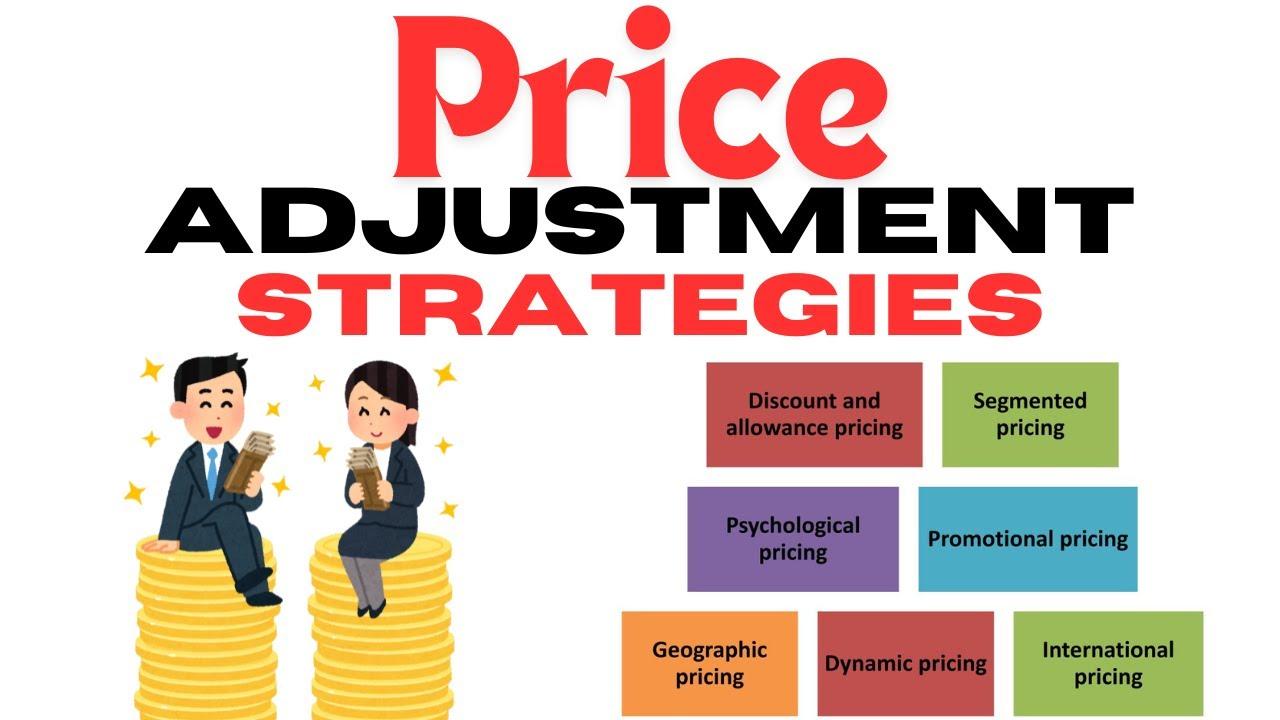
Adjusting Prices for Different Sales Channels
Pricing your art effectively across different sales channels is crucial for maximizing your profit. Each platform has its own dynamics, audience, and expectations, which can significantly impact how your work is perceived and sold. Here’s how to approach pricing in various environments:
- Online Marketplaces: Selling through platforms like Etsy or eBay often requires a competitive pricing strategy. Research what similar artists charge and adjust your prices to reflect your quality and style without undervaluing your work. Consider the platform’s fees and factor them into your final price.
- Gallery Sales: When selling through a gallery, prices typically need to reflect a higher perceived value. Galleries often take a commission (usually 30-50%), so your initial price should be set to ensure you still achieve your desired profit margin.
- Direct Sales: If you’re selling directly to clients at art fairs or exhibitions, you have the advantage of no middleman. This allows for greater flexibility in pricing. Engage with potential buyers to gauge their interest, and use that feedback to adjust your prices accordingly.
- Social Media: Platforms like Instagram and Facebook provide an opportunity to connect with your audience directly. Here, pricing can be more fluid. Offer occasional promotions or discounts to create urgency, but ensure that your base prices reflect the value of your craftsmanship.
It’s also essential to consider the type of art you’re selling. Original pieces generally command higher prices than prints or reproductions. However, the production costs and time invested in creating each piece should also be considered. Here’s a simple table that illustrates pricing strategies based on the type of sales channel:
| Sales Channel | Pricing Strategy | Considerations |
|---|---|---|
| Online Marketplaces | Competitive | Fees, market trends |
| Gallery Sales | Premium | Commission rates, exclusivity |
| Direct Sales | Flexible | Engagement, feedback |
| Social Media | Dynamic | Promotions, audience interaction |
Additionally, don’t forget to tailor your messaging based on the channel. For example, when posting on social media, share the story behind your art or the process of creation—this helps justify your pricing and builds a connection with potential buyers. In contrast, when discussing prices with gallery representatives, focus on the investment value and uniqueness of your pieces.
Lastly, regularly review and adjust your prices based on sales performance and market trends. Staying flexible allows you to optimize your earning potential across each platform. By understanding the nuances of each sales channel and adjusting your pricing strategies accordingly, you can significantly enhance your overall profitability.

Creating a Pricing Formula That Works for You
Pricing your art can feel daunting, but having the right formula in place can simplify the process and lead you to maximum profit. The key is to approach pricing systematically while keeping your creative spirit intact. Here’s how to craft a pricing formula that reflects both your worth and the market demand.
Start by considering your costs. Understanding your expenses is essential to ensure you’re not undervaluing your work. Calculate the following:
- Materials: Include all supplies used, such as canvas, paint, and tools.
- Time: Assign an hourly wage to your creative time. Be honest about how long you invest in each piece.
- Overhead: Factor in costs like studio rent, utilities, and marketing expenses.
Once you have a clear picture of your costs, it’s time to determine your base price. A common method is to use the formula:
| Formula Component | Example Value |
|---|---|
| Base Cost + (Hourly Rate x Hours Spent) | $100 + ($20 x 5) = $200 |
This will help you set a minimum price that covers your costs while allowing for a profit margin. But don’t stop there! Consider adding a value factor based on your experience and artistic reputation:
- Emerging Artist: Add 10-20% for unique style.
- Established Artist: Add 30-50% based on demand and recognition.
- Highly Sought-After: Add 50% or more, depending on market conditions.
Next, it’s crucial to research the market. Look at similar works by artists in your niche and adjust your pricing accordingly. This ensures you’re competitive without undervaluing your creations. Compare not just prices, but also aspects like size, medium, and complexity.
Lastly, always be open to feedback and willing to adapt your pricing strategy. Your work’s value is subjective, and buyer interests can shift. Regularly review and adjust your prices based on sales patterns, customer feedback, and changes in your artistic practice.
With these components in place, you’ll have a comprehensive pricing formula that respects both your artistry and your business goals. Remember, pricing is not a one-time task; it’s an evolving strategy that grows alongside your career.
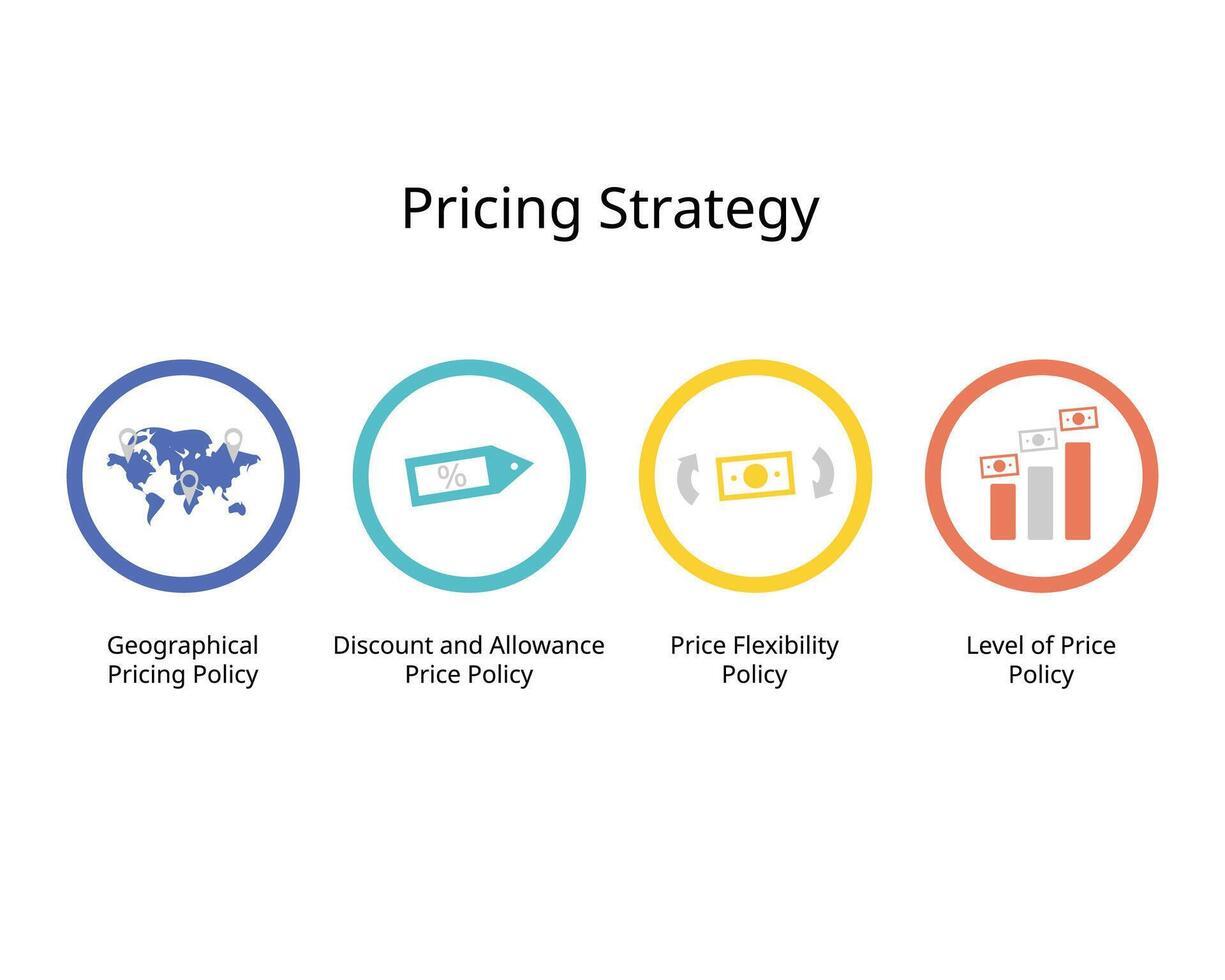
The Importance of Flexibility in Your Pricing Strategy
In the ever-evolving world of art sales, maintaining a rigid pricing structure can stifle your creative potential and limit your profitability. The key to thriving in this competitive landscape lies in the ability to adapt your prices according to various factors. Embracing flexibility in your pricing strategy not only enhances your appeal to different customer segments but also reflects the dynamic nature of the art market.
Consider the following benefits of adopting a flexible pricing approach:
- Market Responsiveness: Flexibility allows you to adjust your prices based on market demand. If you notice an increased interest in a particular style or medium, raising your prices accordingly can capitalize on this trend.
- Audience Segmentation: Different audiences have varying willingness to pay. Tailoring your prices to cater to both high-end collectors and casual art enthusiasts ensures that you reach a broader customer base.
- Seasonal Trends: During peak seasons, such as holidays or art fairs, adjusting your pricing can maximize profits. Conversely, during slower months, offering discounts or promotions can keep sales flowing.
- Value Perception: Changing your prices can influence how customers perceive the value of your art. Strategic price adjustments can enhance the perceived exclusivity of your work.
To effectively implement a flexible pricing strategy, consider the following approaches:
- Dynamic Pricing: Use data analytics to monitor sales trends and adjust your prices in real-time based on buyer interactions and sales patterns.
- Tiered Pricing: Offer multiple price points for different versions of your artwork (e.g., original, prints, and digital downloads) to cater to varying budgets.
- Limited-Time Offers: Create urgency by introducing time-sensitive discounts or special editions. This can inspire quicker purchase decisions from potential buyers.
- Feedback Loops: Regularly seek customer feedback on your pricing and be willing to adjust based on their perceptions and suggestions.
It’s also essential to keep an eye on your competitors. Here’s a simple table illustrating how competitor pricing can inform your own strategy:
| Artist | Art Style | Price Range |
|---|---|---|
| Artist A | Abstract | $200 – $1,500 |
| Artist B | Realism | $300 – $2,000 |
| Artist C | Modern | $150 – $800 |
By analyzing competitors’ price ranges, you can position your artwork strategically within the market. Remember, flexibility doesn’t mean undervaluing your work; rather, it’s about understanding your audience and the market dynamics to maximize your profit potential.
Ultimately, a flexible pricing strategy empowers you to make informed decisions that reflect both your artistic vision and your business goals. The art world is not static, and neither should your pricing be. Embrace the fluidity of the market, and let it guide you towards greater success.
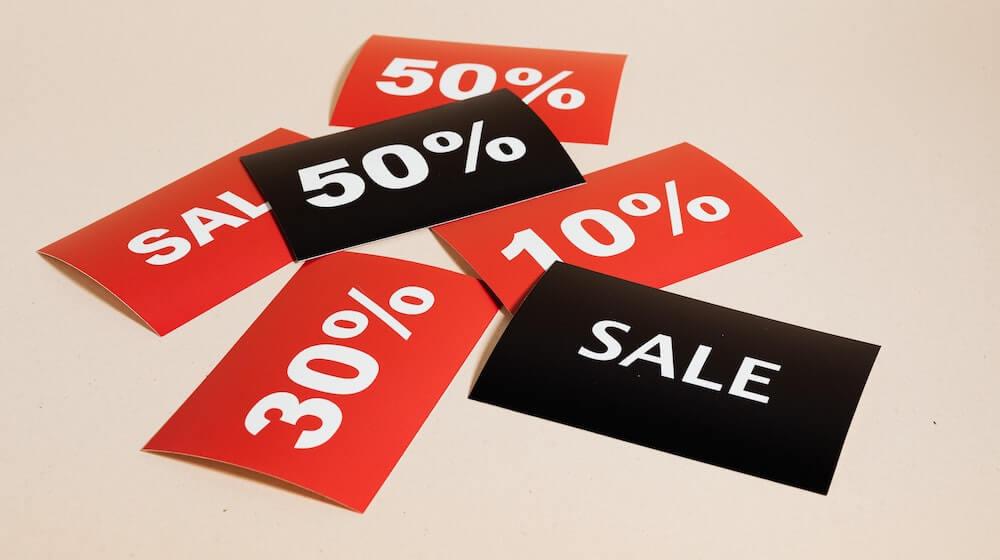
Using Discounts and Promotions Wisely
Implementing discounts and promotions in your pricing strategy can significantly boost your art sales, but using them wisely is key. The goal is to entice potential buyers without devaluing your work. Here are some strategies to consider:
- Targeted Promotions: Focus on specific demographics or occasions. For instance, offer discounts during art fairs, holidays, or local community events to attract attention from the right audience.
- Limited-Time Offers: Create a sense of urgency by limiting the duration of your promotions. This can encourage hesitant buyers to make quicker decisions and can help drive sales spikes during specific periods.
- Bundling: Consider bundling smaller pieces of art or merchandise together at a discounted rate. This not only increases the perceived value but also entices buyers to purchase more than they initially planned.
- Exclusive Deals for Subscribers: Build a mailing list and offer exclusive discounts to your subscribers. This strategy not only rewards loyalty but also keeps your audience engaged with your latest work.
It’s also important to track the effectiveness of your promotions. Use a simple table to analyze sales performance before, during, and after promotional periods:
| Promotion Type | Sales Before Promotion | Sales During Promotion | Sales After Promotion |
|---|---|---|---|
| Holiday Discount | 10 | 25 | 15 |
| Bundle Offer | 8 | 20 | 10 |
| Subscriber Exclusive | 5 | 18 | 12 |
By analyzing this data, you can make informed decisions about which types of promotions yield the best results. Just keep in mind that frequent discounts can lead to a perception that your art is less valuable, so balancing promotions with regular pricing is essential.
Additionally, consider the psychological aspects of pricing. A well-placed discount can make a piece feel more accessible. For instance, if a painting is priced at $500, a limited-time offer of 20% off can make potential buyers feel they’re getting a great deal, bringing the price down to $400. However, pricing it at $400 from the start, then marking it up to $500 before discounting, can also create a perceived value that enhances desirability.
wield discounts and promotions like a strategic tool in your pricing arsenal. When done thoughtfully, they can enhance sales without compromising the integrity of your artwork. Remember, the objective is to attract buyers and maintain the perceived value of your pieces. Stay adaptable, evaluate the outcomes, and adjust your approach as needed to maximize your profit potential.

Learning from Competitors: What Can They Teach You?
One of the most effective ways to refine your pricing strategy is by observing the competition. By analyzing what similar artists charge for their work, you can gain invaluable insights into market trends and customer expectations. Here are some key lessons you can learn:
- Understand Market Rates: Take note of what local and online artists in your niche are charging. This can help you position your own prices competitively.
- Identify Pricing Models: Many artists use different pricing models, such as per square inch, hourly rates, or fixed prices for certain sizes. Discover which model resonates with your style and audience.
- Evaluate Quality vs. Price: Compare the quality of your work to that of your competitors. This will help you determine if you need to adjust your prices to better reflect the craftsmanship and value you provide.
- Learn from Their Marketing Strategies: Notice how your competitors market their art. This includes their social media presence, website design, and customer engagement tactics. Adopting some of their successful strategies can enhance your own sales efforts.
Additionally, consider the following aspects when analyzing your competitors:
| Competitor | Price Range | Unique Selling Proposition |
|---|---|---|
| Artist A | $100 – $500 | Custom commissions and vibrant colors |
| Artist B | $50 - $300 | Affordable prints and limited editions |
| Artist C | $200 – $800 | Large canvases and unique textures |
Once you have gathered data, don’t just imitate; innovate! Use the information to craft a pricing strategy that sets you apart. Here are some ways to differentiate your pricing:
- Offer Tiered Pricing: Create multiple price levels for your art, catering to different budgets. This can include originals, prints, and merchandise.
- Implement Limited Time Offers: Consider seasonal discounts or exclusive promotions to create urgency and increase sales.
- Enhance Customer Experience: Price isn’t just about numbers; it encompasses the entire buying experience. Provide exceptional service that justifies your price point.
keep an eye on your competitors over time. The art market can shift quickly, and regular monitoring will help you stay adaptable. This proactive approach will not only help you price your art for maximum profit, but also ensure that you remain relevant and competitive in the ever-evolving landscape of the art world.

How to Handle Negotiations and Price Objections
When you enter the world of art sales, negotiations and price objections are inevitable. Rather than seeing these challenges as roadblocks, consider them as opportunities to further engage with potential buyers and showcase the true value of your work. Here are some strategies to effectively handle these situations:
- Know Your Worth: Before any negotiation, be confident in your pricing. Understand the factors that contribute to the value of your art, such as your experience, the time spent creating the piece, and the materials used. This knowledge will empower you during discussions.
- Listen Actively: When a buyer raises a price objection, listen carefully to their concerns. Are they worried about the budget? Do they feel the piece doesn’t resonate with them? Understanding their viewpoint allows you to tailor your response effectively.
- Highlight Unique Qualities: Emphasize what makes your artwork special. Share the story behind the piece, your artistic process, and any emotional connections or themes that inspired it. This can help justify the price in the buyer’s eyes.
When faced with objections, it’s crucial to maintain a positive demeanor. Here’s how you can keep the conversation constructive:
- Stay Calm and Professional: If a buyer expresses concern about the price, remain composed. A defensive response can end the conversation on a sour note. Instead, thank them for their honesty and engage in a dialogue.
- Be Open to Compromise: Consider offering flexible payment options or package deals for multiple pieces. This approach can help bridge the gap between your price and their budget without devaluing your art.
- Use Testimonials: If you have previous buyers who have praised your work, bring their feedback into the conversation. Positive testimonials can reinforce the value of your art and help persuade potential buyers.
Your negotiation tactics can be strengthened by having a clear pricing strategy. Here’s a simple breakdown of factors that should influence your pricing:
| Factor | Details |
|---|---|
| Time Invested | Calculate the hours spent on creating the piece, including research, drafting, and finishing touches. |
| Material Costs | Factor in the cost of materials used (paints, canvases, etc.) to ensure you’re not operating at a loss. |
| Market Demand | Research similar artworks and their sales to gauge what buyers are willing to pay. |
Lastly, always remember that every conversation is a learning opportunity. If a deal doesn’t go through, reflect on the interaction. What worked? What didn’t? This practice will refine your negotiation skills and increase your confidence in future engagements.
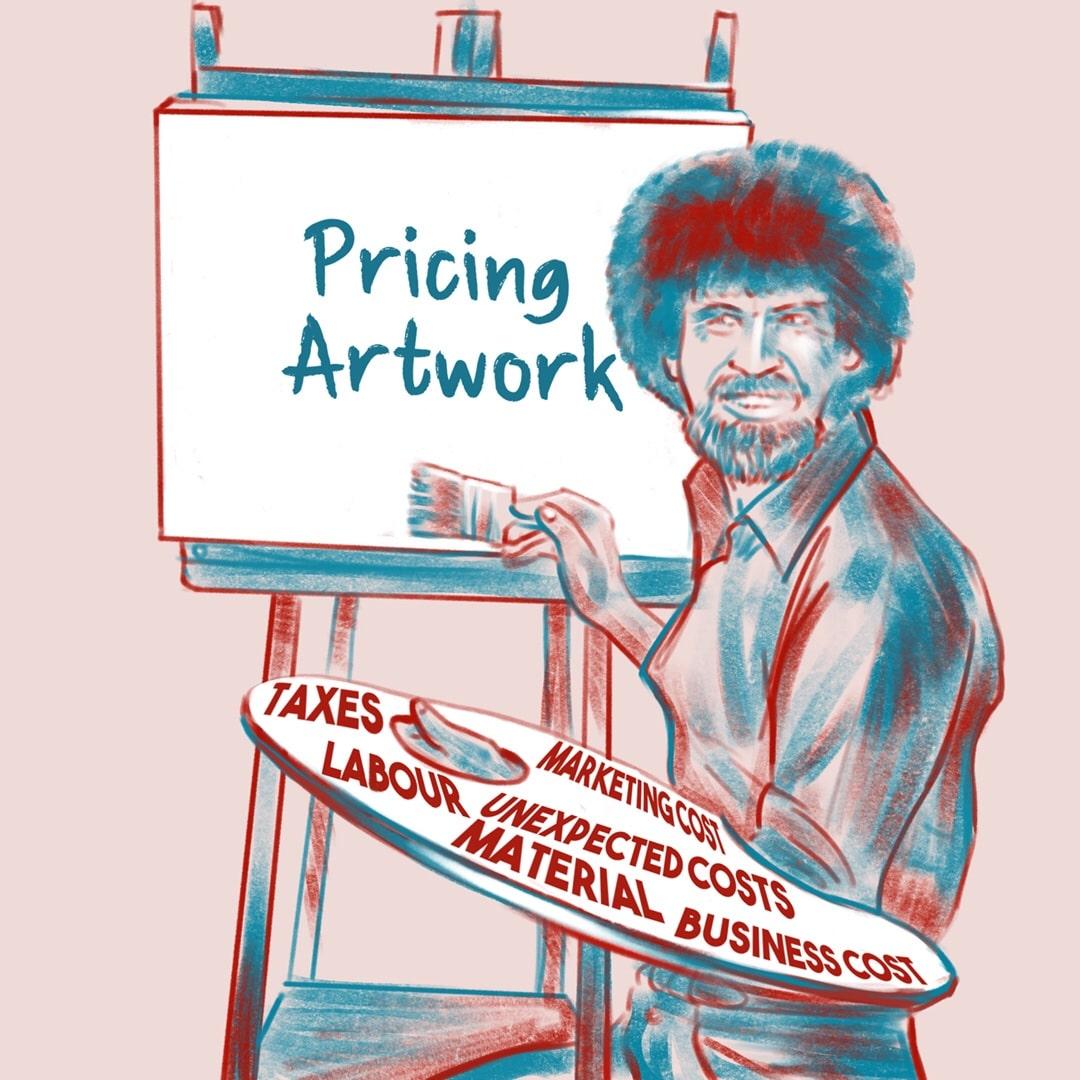
Reassessing Your Prices Over Time for Continued Profit
As artists, it’s crucial to stay dynamic not just in your creative process, but also in your pricing strategy. Your initial pricing may have felt right at the time, but as your skills evolve, market conditions shift, and your audience expands, a reassessment may be in order. Understanding when and how to adjust your prices can significantly affect your bottom line.
Here are a few factors to consider when reassessing your prices:
- Skill Development: As you grow and refine your technique, your work’s value increases. Don’t hesitate to raise your prices to reflect your enhanced skills and artistry.
- Market Demand: Keep an eye on your local and online art markets. If your pieces are gaining popularity, it might be time to increase your prices to match the demand.
- Cost of Materials: Regularly review your expenses for supplies. If the cost of materials rises, ensure your prices reflect these changes to maintain your profit margins.
- Exhibitions and Recognition: Participation in exhibitions or gaining recognition can elevate your status as an artist. Use this as an opportunity to adjust your pricing accordingly.
- Feedback from Customers: Engage with your audience and seek feedback on your pricing. Understanding what your clients are willing to pay can guide your pricing strategy.
It’s also beneficial to establish a regular review schedule for your pricing. Whether it’s quarterly or annually, consistent evaluation will help you stay ahead. You might consider creating a simple table to track changes in your pricing strategy:
| Review Period | Current Price | Proposed New Price | Reason for Change |
|---|---|---|---|
| January 2023 | $200 | $250 | Skill Development |
| April 2023 | $250 | $300 | Market Demand |
| July 2023 | $300 | $350 | Increased Material Costs |
Additionally, consider offering limited-time promotions or discounts for older works. This tactic can clear out inventory while still allowing room for your newer pieces priced at a higher value. It creates a sense of urgency and can attract new buyers.
Lastly, don’t forget to communicate changes transparently with your audience. Whether through social media, your website, or newsletters, let your customers know why your prices are changing. Transparency builds trust and helps customers understand the value they are receiving.
Frequently Asked Questions (FAQ)
Q&A: How to Price Your Art for Maximum Profit (Full Guide + Formula)
Q: Why is pricing my art correctly so important?
A: Pricing your art correctly is crucial because it reflects the value of your work and can significantly impact your sales. If you price too low, you risk undervaluing your talent and effort, which can lead to burnout. On the other hand, pricing too high may deter potential buyers. Finding that sweet spot ensures you’re compensated fairly while still attracting art lovers.
Q: What factors should I consider when pricing my art?
A: Great question! There are several key factors to consider:
- Material Costs: Calculate how much you spent on canvases, paints, and other materials.
- Time: Estimate how long it took you to create the piece. Your time is valuable!
- Skill Level: Consider your experience and the complexity of your work. Emerging artists might need a different approach compared to established ones.
- Market Trends: Research similar artworks in your niche to gauge what your audience is willing to pay.
- Exhibition Costs: If you’re showing your work in galleries or at events, factor in those expenses too.
Q: Is there a specific formula I should use to price my art?
A: Absolutely! A popular formula is:
(Material Costs + Time Value) x 2 = Base Price
For time value, consider your hourly rate. For example, if you spent 10 hours on a painting and value your time at $20/hour, it would be $200 for time alone. Add your material costs, then multiply by two to ensure you cover all your bases and make a profit.
Q: What if I’m just starting out and don’t have much experience?
A: Starting out can be intimidating, but remember that everyone has to begin somewhere! You can use a slightly lower price point to attract buyers, but don’t undervalue your work. Perhaps start at a price that reflects your material costs and a modest hourly rate. As your skills, reputation, and audience grow, you can gradually increase your prices.
Q: How do I adjust my prices over time?
A: As you gain experience and your art evolves, it’s natural to adjust your prices. Regularly assess your work and consider factors such as increased skill level, demand for your art, and feedback from buyers. Keep track of your sales and be willing to raise your prices as you grow. Remember, it’s not just about the art; it’s about your journey as an artist!
Q: Any tips for showcasing my art to justify my pricing?
A: Definitely! Presentation is key. Invest in high-quality images of your work, consider framing pieces for exhibitions, and create a professional portfolio. Also, share your artistic process on social media—people love seeing behind-the-scenes content! Engaging stories about your work can create emotional connections, making it easier for potential buyers to see the value in your pricing.
Q: How can I handle rejection or negative feedback regarding my prices?
A: Rejection is part of the art world, but don’t let it derail you! Use feedback as a learning opportunity. If someone thinks your prices are too high, politely ask why they feel that way. You might discover useful insights that can help you refine your pricing strategy. Remember, not everyone will appreciate your art, and that’s okay. Focus on attracting those who do recognize its value.
Q: What’s the best takeaway for artists trying to price their work?
A: The best takeaway is to believe in the value of your art! Pricing can be daunting, but with careful consideration of all the factors we discussed, you can set a fair price that reflects your effort and creativity. Don’t be afraid to take risks and experiment with your pricing strategy. The right price will not only help you maximize profits but also build a loyal customer base that appreciates your unique vision. Happy creating!
Wrapping Up
Wrapping It Up: Your Art, Your Value
By now, you should have a solid grasp on how to price your art for maximum profit. Remember, pricing isn’t just about numbers; it’s about recognizing the value of your creativity and the hard work you put into your craft. So, take a deep breath, trust the process, and don’t shy away from adjusting your prices as you grow and evolve as an artist.
As you put the formula into practice, keep in mind that pricing can also be a reflection of your unique style and the story behind each piece. Don’t be afraid to communicate that value to your audience. After all, your art is more than just a product—it’s a piece of your heart and soul.
So go ahead, put your newfound pricing knowledge to the test! Experiment, gather feedback, and watch as your work resonates with buyers in ways you might not have imagined. You’ve got this, and I can’t wait to see how you flourish.
Now, grab your calculator, set your prices with confidence, and let your art shine! If you have questions or want to share your pricing journey, drop a comment below. Happy creating!



